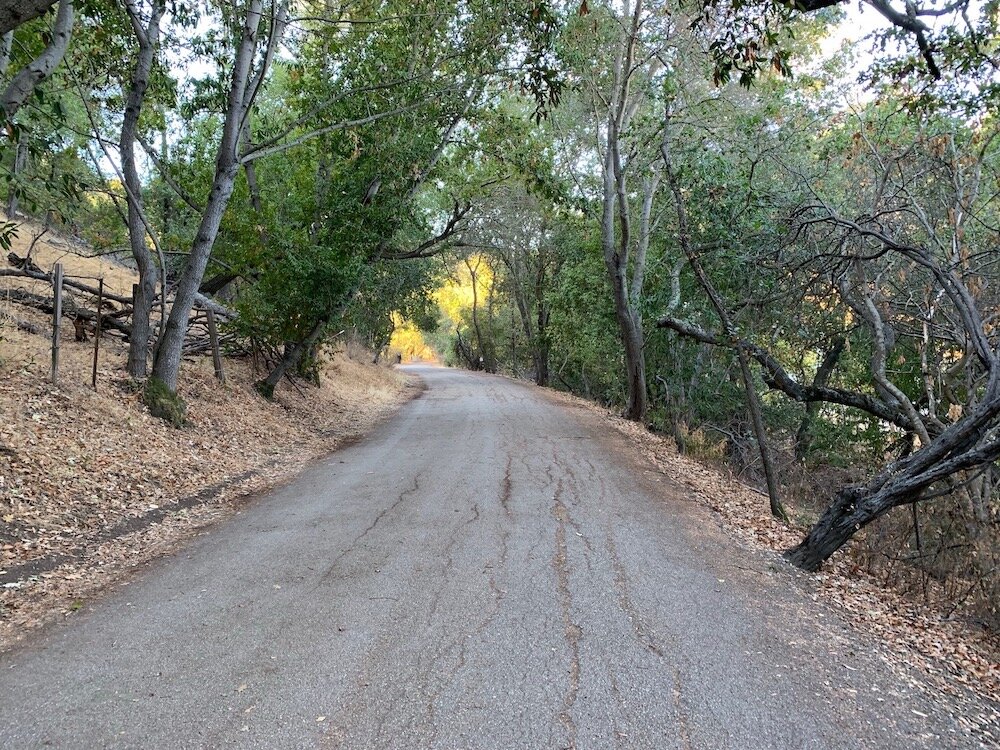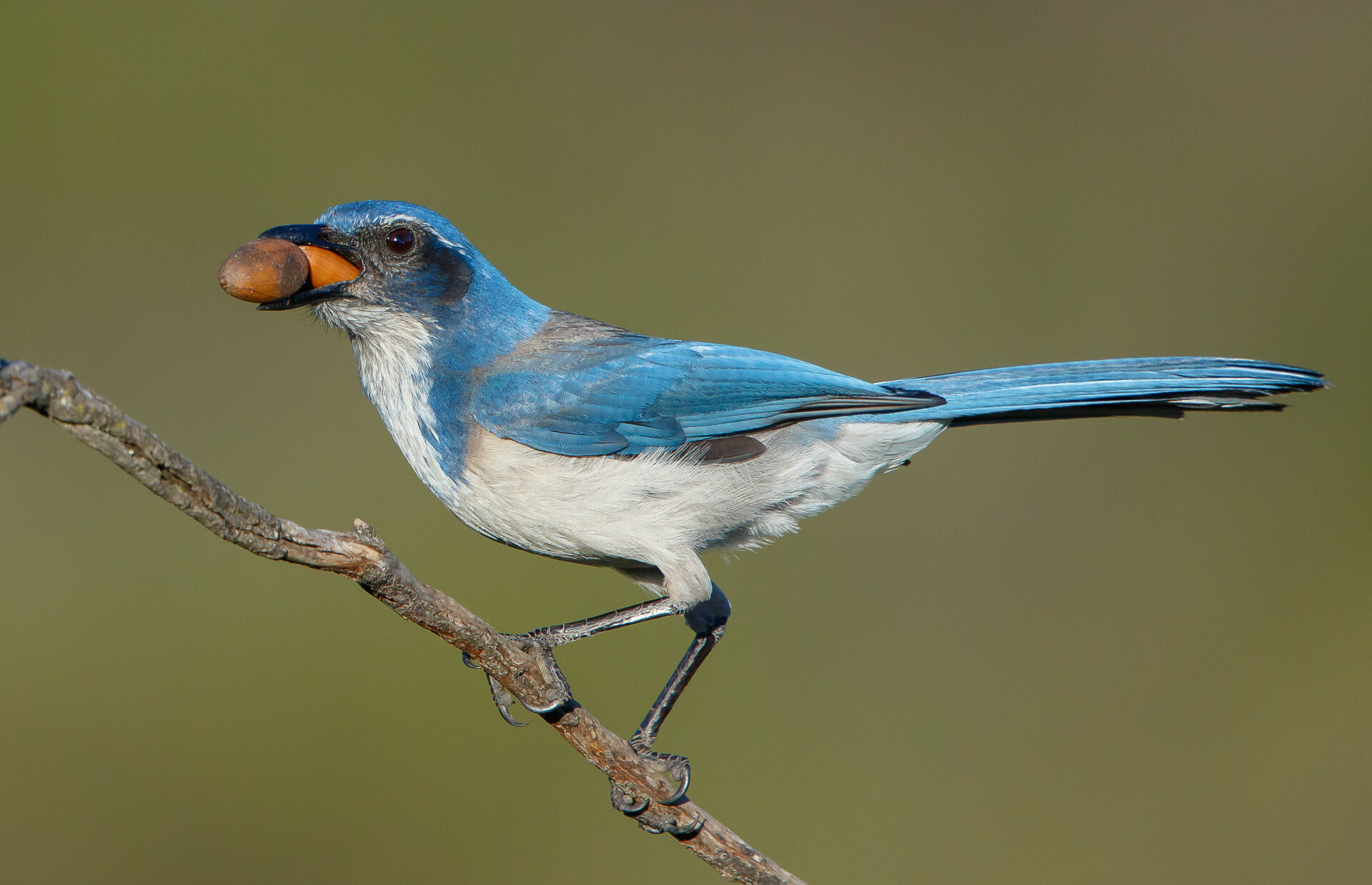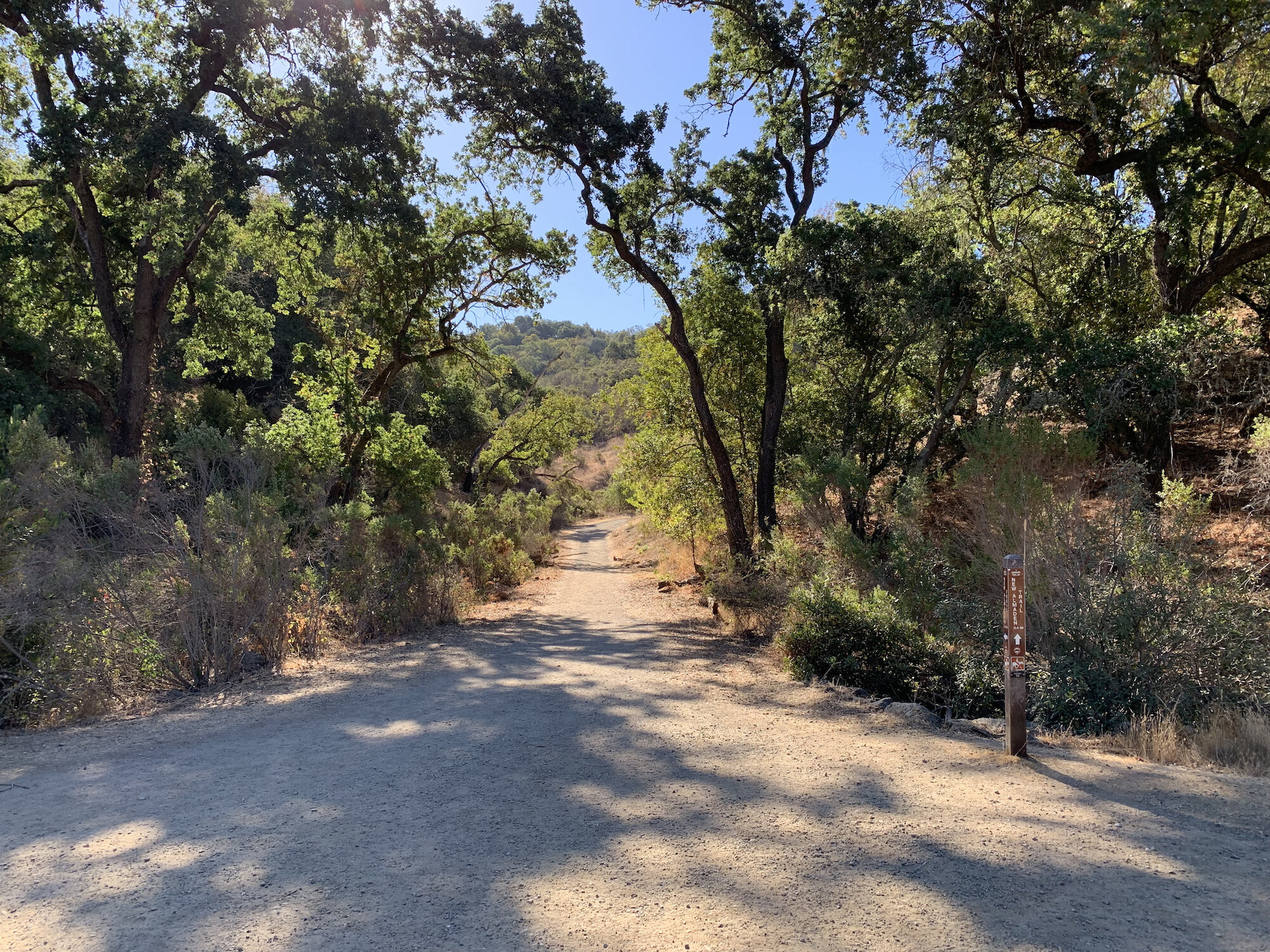Almaden Quicksilver County Park - McAbee Entrance (Fall/Winter):
No Gold Here
by Eve Meier
Visit Almaden Quicksilver County Park in San Jose in the fall and winter months to enjoy the cooler weather, learn a bit about quicksilver mining, and hear the Golden-crowned Sparrows calling “no gold here” from the grassy hillsides.
Trip Covers: Oct - March
Key Birds: Acorn Woodpecker, California Scrub-Jay, Wrentit, California Thrasher, Golden-crowned Sparrow, Spotted Towhee
How to Bird
The area that is now Almaden Quicksilver County Park was once the second-largest mercury (quicksilver) mine in the world. No gold was ever found here but the mine was hugely successful because quicksilver was used to extract gold from rock. The mine operated between 1845 and 1976 and remnants of the old mining days can be found throughout the park.
The Senador Mine site.
The route I am recommending is a 2-mile loop that passes through oak woodland and chaparral habitats as it takes you up to the Senador Mine site, then up and over a small hill with views of Almaden Valley. Most of this route is a wide fire road which can be rocky at times and has several short, steep sections. This is a popular park with hikers and walkers from the nearby neighborhood so it can be busy, especially on weekends.
Starting from the trail entrance on the corner of McAbee Rd and Whispering Pines, walk along the Senador Mine Trail which mostly parallels McAbee Creek. Remain on this trail until you reach the Senador Mines remnants (#1 on interactive map) in 0.5 miles. (You’ll pass trail intersections 2 and 4 which are shown on the map below.)
The trail starts off shady, paved, and under a canopy of Bay Laurel trees. Take the time to breathe deeply and notice the fragrant smell of the trees - a favorite of mine. This section of the trail can be busy with people but the crowds will disperse once you get to the official park entrance with the porta-potties just up ahead in ¼ of a mile.
The start of the Senador Mine Trail is shaded by Bay Laurels
Once you pass the official park entrance, slow down your pace and spend some time listening; this way, you’ll have better luck locating the small oak woodland birds which can be difficult to spot at times. That scratching under the poison oak is likely a Spotted Towhee kicking up the leaf litter but maybe you’ll find a California Thrasher or a Fox Sparrow. The tapping you hear is most likely an Acorn Woodpecker but take the time to investigate and maybe you’ll discover a Nuttall’s Woodpecker, Hairy Woodpecker or even a Red-breasted Sapsucker. If you hear a quiet metallic chip note, look high in the oaks for a Townsend’s Warbler foraging on the oak leaves. Or, if you hear the rustling of a bigger animal, it’s likely deer but could also be a flock of Wild Turkey.
Spotted Towhee by Karen Werner
The noisy and busy California Scrub-Jays can’t be missed in this park. Along the whole 2-mile route you’ll see these birds flying by carrying their acorns, scolding intruders from an oak tree branch, caching their acorns underneath the leaf litter, or keeping watch from the top of a large oak tree.
California Scrub-Jay by Steve Zamek
Other birds to look for high in the leaves of the oak trees are Hutton’s Vireos, Chestnut-backed Chickadees, Oak Titmice, Bushtits, Ruby-crowned Kinglets (fall/winter) and Yellow-rumped Warblers (fall/winter). Along the trunks, watch for White-breasted Nuthatches creeping up and down the branches. And underneath the oaks look for Dark-eyed Juncos which camouflage themselves surprisingly well in the leaf litter.
As you are walking along the Senador Mine Trail passing through oak and chaparral habitats also notice the now-dry creek bed on your left. It is lined with poison oak and coyote brush. Check for movements in the shadows of the low bare branches. I often find Hermit Thrushes here flicking their wings as they sit on a branch in the shadows. Wrentits are common here too and if I wait patiently, I can often find one or two birds moving about.
As you near the Senador Mine site (you’ll see the three cement structures in the distance), the trail opens up and there will be grassy hillsides to your right and left. This is a great area for all sorts of sparrows. My favorite birds here are the Golden-crowned Sparrows that call “me-oh-my” from sunny hillsides. According to All About Birds, miners in the Yukon referred to the Golden-crowned Sparrow as the “no gold here” bird because its song sounds like that phrase. When I wonder what it was like to live in this area when the mine was active, I imagine the miners also listening to the call of the Golden-crowned Sparrows. Listen to Golden-crowned Sparrows in the Klondike by BirdNote for more information and to hear the sparrow’s call.
Golden-crowned Sparrow by Brooke Miller
Look and listen for other sparrows too. White-crowned Sparrows are common here as well as Lincoln’s Sparrows with their insect-like call and fine upper breast streaking. Song Sparrows with their heavy, dark breast streaking, and even Rufous-crowned Sparrows with their plain breasts, rufous crowns and creamy eye rings, have been spotted at this location.
Once you’ve reached the Senador Mine area, take the time to notice the terracing and the three large cement structures which are dust collectors for the furnace that was used to recover quicksilver from the dark red cinnabar of this park. Two park interpretive signs, one in front of the dust collectors (#1 on interactive map) and the other near the shady picnic table (shown on map), explain the structures and show some photos of how the area looked circa 1924.
Along with the sparrows, this is also a good location for California Thrashers. I often locate them by hearing them first then finding one or two sitting on top of coyote brush. Also, watch for California Towhees running or hopping on the ground. At first sight, they seem rather plain but if you look closely, you’ll notice the beautiful orange on their throats and underneath their tails. California Quail, the state bird of California, move around in their coveys calling “cu-CAW-go, cu-CAW-go, cu-CAW-go”. And, check the ridge to your right. The Guadalupe Landfill is over the hill so there is often a large gathering of Common Ravens circling above along with the occasional Red-tailed Hawk, Golden Eagle or American Kestrel.
California Thrasher by Tom Grey
After you’ve birded the Senador Mine area and have read the information about Senador Mine, return downhill the way you came but make the first right onto the single-track New Almaden Trail (#2 on interactive map).
The single-track New Almaden Trail at the junction with Senador Mine Trail
This short 0.4 mile section of single track trail takes you up through more oak woodland and chaparral habitat. Shortly after starting this section of trail, you may notice an Acorn Woodpecker granary tree to your left. So, if you haven’t spotted an Acorn Woodpecker yet, this is a good location.
When you reach the 5-way trail intersection, take a left to head down the hill on the Mine Hill Trail (#3 on interactive map).
On the way down the hill, continue to watch and listen for the oak woodland and chaparral birds mentioned earlier. And, in the more open areas, look for a White-tailed Kite sitting on top of a tree or hovering in mid-air. American Kestrels, North America’s smallest falcons, may also be hovering or sitting along the fence watching for insects and other prey. The Say’s Phoebe, a cinnamon-colored flycatcher and winter resident to our county, may be found on top of a tall blade of sturdy grass or spotted flying low with a fluttery dipping flight.
Open grasslands along Mine Hill Trail
When you reach the end of this trail, make a right (#4 on map) to return to your car.
Ready for More? If you’d like to do a longer hike, I recommend a 4-mile loop that will take you alongside Guadalupe Creek and Guadalupe Reservoir where you are likely to see Steller’s Jays, Downy Woodpeckers, and maybe even a Brown Creeper in the riparian area. Double-crested Cormorants and Canada Geese can be seen on the water of the reservoir.
If you want to bird other areas of this park, try our self-guided field trip for the Woods Trail entrance. You can also visit the main entrance of Almaden Quicksilver County Park where there is a display of mining artifacts at the trailhead.
Interactive Map
Route Summary
From the trail entrance on McAbee Rd, follow the Senador Mine Trail for 0.5 miles to reach the Senador Mine site. You will pass by the porta-potties and a couple of trail intersections.
After exploring the Senador Mine area, go back the way you came but make the first right onto the single track New Almaden Trail. Walk along the New Almaden Trail for 0.4 miles until you reach the next trail intersection.
At the 5-way trail intersection, turn left onto the Mine Hill Trail. Travel downhill for 0.6 miles.
At the end of Mine Hill Trail, turn right onto the Senador Mine Trail and continue 0.2 miles back to the intersection of McAbee Rd and Whispering Pines Dr.
Directions: From CA-85, exit Camden Ave. Drive south on Camden Ave for about 3.5 miles then turn right onto McAbee Rd. Continue on McAbee for half a mile. Park entrance is on your right at the intersection of McAbee Rd and Whispering Pines Dr. Street parking. Latitude/Longitude: 37.214778, -121.881427
Parking: On street parking
Fees: None
Trail Hours: Sunrise to sunset
Facilities: Wheelchair-accessible porta-potties, no water. There’s a picnic table by the porta-potties and a few benches along the route.
Trip Mileage: 2 miles
Trail Conditions: Wide dirt fire road, rocky at times, some steep sections, little shade. The route I’ve recommended has about a 300ft elevation gain.
Accessibility: This trip is not wheelchair accessible. You can do a short portion of this trip which is mostly flat.
Bikes: Not allowed in this section of the park
Dogs: Dogs are allowed on 6-ft leash
More Information
Almaden Quicksilver County Park Trail Map
Almaden Quicksilver County Park Website
eBird hotspot: Almaden Quicksilver CP--McAbee Rd. entrance
All About Birds: Golden-crowned Sparrow
Bay Nature Article: Golden-crowned Sparrows and the Song of Fall
BirdNote Podcast: Golden-crowned Sparrows in the Klondike
More Resources
For more trips like this one, visit Self-Guided Field Trips.
Visit the SCVAS Birding Resources page for more information on where to bird, our birding community, bird identification resources and more.
Read “What to Look for Now” by SCVAS Executive Director Matthew Dodder.
Banner Photo Credit: Golden-crowned Sparrow by Tom Grey
Last Updated: 5/18/2022
Enjoyed this Trip?
Support the work of Santa Clara Valley Audubon Society and become a member. To contact the trip writer with comments, questions or location updates, please email fieldtrips@scvas.org. You can also post in the comment section below. (If you’d like to post anonymously, type your comment, select “Post Comment”, then simply provide a name, like “Guest”, and select “Comment as Guest”.)









